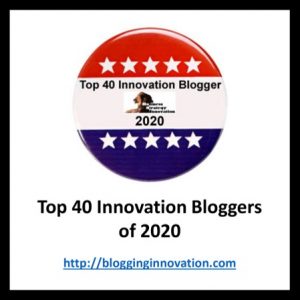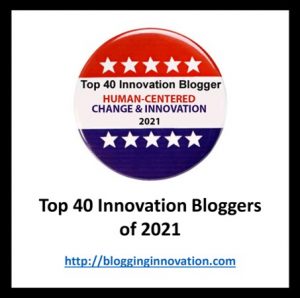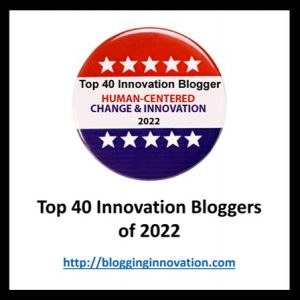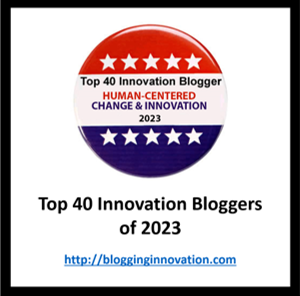
GUEST POST from Greg Satell
When Mohandas Gandhi was a young lawyer he was so shy that he couldn’t even bring himself to speak in an open courtroom. He was also impulsive and had a nasty temper. Nelson Mandela started out as an angry nationalist, who argued vigorously about joining forces with other racial groups in a coalition to fight against Apartheid.
Yet as I explain in my book Cascades, both men learned to conquer themselves and evolved into inspirational leaders that achieved transformational change. Movements, as the name implies, must be kinetic to be successful. They need to start in one place and end up somewhere else, evolving and changing along the way.
The same is true for an organization. To create a real impact on the world, you first must drive change internally. That’s not easy and it doesn’t happen all at once, which is why most transformations fail. However, successful leaders understand that to bring true change about it is not enough to simply plan and direct action, you have to inspire and empower belief.
Building A Genome of Values
When Lou Gerstner took over as CEO of IBM in 1993, the company was near bankruptcy. Many thought it was a dinosaur and should be broken up. Yet Gerstner saw that its customers needed it to help them run their mission-critical systems and the death of IBM was the last thing they wanted. He knew that to save the company, he would have transform it and he started with its values.
“At IBM we had lost sight of our values,” Irving Wladawsky-Berger, one of Gerstner’s chief lieutenants, told me. “IBM had always valued competitiveness, but we had started to compete with each other internally rather than working together to beat the competition. Lou put a stop to that and even let go some senior executives who were known for infighting.”
Pushing top executives out the door is never easy. Most are hard working, ambitious and smart, which is how they got to be top executives in the first place. Yet sometimes you have to fire nasty people, even if they outwardly seem like good performers. That’s how you change the culture and build a collaborative workplace.
In doing so, Gerstner led one of the greatest turnarounds in corporate history. By the late 1990s, his company was thriving again and continues to be profitable to this day. That would have never been true if he saw the problem as one of merely strategy and tactics. IBM had to change from the inside first.
Forging Shared Purpose And Shared Consciousness
When General Stanley McChrystal first took over Special Forces in Iraq, he knew he had a magnificently engineered military machine. No force in the world could match their efficiency, expertise and effectiveness. Yet, although they were winning every battle, they were losing the war.
The problem, as he explained in his book, Team of Teams, wasn’t one of capability, but interoperability. His forces would kill or capture Al Qaeda operatives and collect valuable intelligence. Yet it often took weeks for the prisoners to be questioned and the data to be analyzed. By that time, the information was often no longer relevant or actionable.
What McChrystal realized was that if his forces were going to defeat a network, they had to become a network and he set out to build connections within his organization to improve trust and interoperability. He upgraded liaison officer positions to only include the best operators and embedded commandos into intelligence teams and vice versa.
While formal structure and traditional lines of authority stayed very much in place, operating principles changed markedly. The transformation wasn’t immediate, but soon personal relationships and shared purpose replaced archaic customs, procedures and internal rivalries. Even those resistant to change found themselves outnumbered and began to alter their views and behavior.
That allowed McChrystal to also change the way he led. While in traditional organizations information is passed up through the chain of command and decisions are made at the top, McChrystal saw that model could be flipped. Now, he helped information get to the right place and decisions could be made lower down. As a result, operating efficiency increased by a factor of seventeen and soon the terrorists were on the run.
Forging Cultural Awareness
As one of the largest credit bureaus in the world, Experian’s customers depend on it to help determine which customers are good risks and which aren’t. If its standards are too lax, lending organizations lose money from making bad loans. However, the opposite is also true. There are also consequences if it fails to identify good credit risks.
“One of the things that made the US so successful throughout its history is the principle that everybody can participate in the American dream,” Alexander Lintner, Group President at Experian told me. “Yet today, if you don’t have access to credit, it is very hard to live that dream. You can’t buy a house or a new car or do many other things most people want to do.”
“If we rely solely on traditional credit scores about 26 million working age adults are left out of the credit system,” he continued. “That means our clients are missing out on as many as 26 million potential customers. So at Experian, we’ve been working on extended scores based on alternative data, such as rent and utility bills, to help establish a credit history.”
As a fairly recent immigrant to the country, Lintner knows the problems that having a lack of a formal credit history can cause. He credits his company’s efforts to promote cultural awareness programs internally through Employee Resource Groups for driving a passion to solve problems for customers and the public at large, especially related to financial inclusion.
Transformation Starts At Home
Clearly, Experian didn’t start its Employee Resource Groups as a product development strategy, but to improve the lives of its employees. “We strive to make a very diverse group of people feel that Experian is their home,” Lintner says. Nevertheless, Its internal commitment helped create empathy for those who are excluded from the financial system and helped lead to a solution.
Chances are, that won’t end with using alternative data to improve credit scores, but will affect many other facets of its business. To drive a true desire to solve problems, it must be genuine. Much like Gandhi and Mandela, you have to first drive change internally if you hope to create a real impact on the world.
Wladawsky-Berger talks about IBM’s earlier transformation in similar terms. “Because the transformation was about values first and technology second, we were able to continue to embrace those values as the technology and marketplace continued to evolve,” he told me and credits that transformation in values with the company’s continued profitability. While IBM has had its challenges over the years, nobody talks about breaking it up anymore.
What most organizations fail to understand and internalize is that transformation is always a journey, never a destination. There is no immediate return on investment from cultural change. Investors won’t cheer you on for firing top employees who are disruptive or creating Employee Resource Groups. Yet great companies understand that transformation always starts at home.
— Article courtesy of the Digital Tonto blog and previously appeared on Inc.com
— Image credit: Pexels
![]() Sign up here to join 17,000+ leaders getting Human-Centered Change & Innovation Weekly delivered to their inbox every week.
Sign up here to join 17,000+ leaders getting Human-Centered Change & Innovation Weekly delivered to their inbox every week.









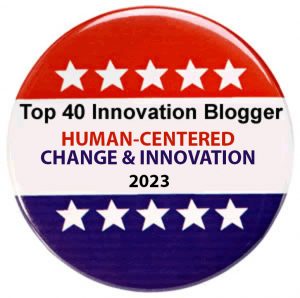 After a week of torrid voting and much passionate support, along with a lot of gut-wrenching consideration and jostling during the judging round, I am proud to announce your Top 40 Innovation Bloggers of 2023:
After a week of torrid voting and much passionate support, along with a lot of gut-wrenching consideration and jostling during the judging round, I am proud to announce your Top 40 Innovation Bloggers of 2023:

 Greg Satell is a popular speaker and consultant. His first book,
Greg Satell is a popular speaker and consultant. His first book,  Mike Shipulski brings together people, culture, and tools to change engineering behavior. He writes daily on Twitter as
Mike Shipulski brings together people, culture, and tools to change engineering behavior. He writes daily on Twitter as 

 A twenty-five year Procter & Gamble veteran, Pete has spent the last 8+ years applying insights from psychology and behavioral science to innovation, product design, and brand communication. He spent 17 years as a serial innovator, creating novel products, perfume delivery systems, cleaning technologies, devices and many other consumer-centric innovations, resulting in well over 100 granted or published patents. Find him at pete.mindmatters@gmail.com
A twenty-five year Procter & Gamble veteran, Pete has spent the last 8+ years applying insights from psychology and behavioral science to innovation, product design, and brand communication. He spent 17 years as a serial innovator, creating novel products, perfume delivery systems, cleaning technologies, devices and many other consumer-centric innovations, resulting in well over 100 granted or published patents. Find him at pete.mindmatters@gmail.com


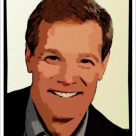



 Soren Kaplan is the bestselling and award-winning author of Leapfrogging and The Invisible Advantage, an affiliated professor at USC’s Center for Effective Organizations, a former corporate executive, and a co-founder of
Soren Kaplan is the bestselling and award-winning author of Leapfrogging and The Invisible Advantage, an affiliated professor at USC’s Center for Effective Organizations, a former corporate executive, and a co-founder of 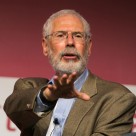
 Diana heads marketing at
Diana heads marketing at 
 Dainora (a.k.a. Dee) creates customer-centric content at Viima. Viima is the most widely used and highest rated innovation management software in the world. Passionate about environmental issues, Dee writes about sustainable innovation hoping to save the world – one article at the time.
Dainora (a.k.a. Dee) creates customer-centric content at Viima. Viima is the most widely used and highest rated innovation management software in the world. Passionate about environmental issues, Dee writes about sustainable innovation hoping to save the world – one article at the time. Arlen Meyers, MD, MBA is an emeritus professor at the University of Colorado School of Medicine, an instructor at the University of Colorado-Denver Business School and cofounding President and CEO of the Society of Physician Entrepreneurs at
Arlen Meyers, MD, MBA is an emeritus professor at the University of Colorado School of Medicine, an instructor at the University of Colorado-Denver Business School and cofounding President and CEO of the Society of Physician Entrepreneurs at 
 Leo is the founder of
Leo is the founder of  Rachel Audige is an Innovation Architect who helps organisations embed inventive thinking as well as a certified Systematic Inventive Thinking Facilitator, based in Melbourne.
Rachel Audige is an Innovation Architect who helps organisations embed inventive thinking as well as a certified Systematic Inventive Thinking Facilitator, based in Melbourne. Art Inteligencia is the lead futurist at Inteligencia Ltd. He is passionate about content creation and thinks about it as more science than art. Art travels the world at the speed of light, over mountains and under oceans. His favorite numbers are one and zero.
Art Inteligencia is the lead futurist at Inteligencia Ltd. He is passionate about content creation and thinks about it as more science than art. Art travels the world at the speed of light, over mountains and under oceans. His favorite numbers are one and zero.
 Phil McKinney is the Author of “Beyond The Obvious”, Host of the Killer Innovations Podcast and Syndicated Radio Show, a Keynote Speaker, President & CEO CableLabs and an Innovation Mentor and Coach.
Phil McKinney is the Author of “Beyond The Obvious”, Host of the Killer Innovations Podcast and Syndicated Radio Show, a Keynote Speaker, President & CEO CableLabs and an Innovation Mentor and Coach. Dr. Ralph-Christian Ohr has extensive experience in product/innovation management for international technology-based companies. His particular interest is targeted at the intersection of organizational and human innovation capabilities. You can follow him on Twitter
Dr. Ralph-Christian Ohr has extensive experience in product/innovation management for international technology-based companies. His particular interest is targeted at the intersection of organizational and human innovation capabilities. You can follow him on Twitter 
 Dr. Dean Anderson and Dr. Linda Ackerman Anderson lead
Dr. Dean Anderson and Dr. Linda Ackerman Anderson lead 
 Scott Anthony is a strategic advisor, writer and speaker on topics of growth and innovation. He has been based in Singapore since 2010, and currently serves at the Managing Director of Innosight’s Asia-Pacific operations.
Scott Anthony is a strategic advisor, writer and speaker on topics of growth and innovation. He has been based in Singapore since 2010, and currently serves at the Managing Director of Innosight’s Asia-Pacific operations.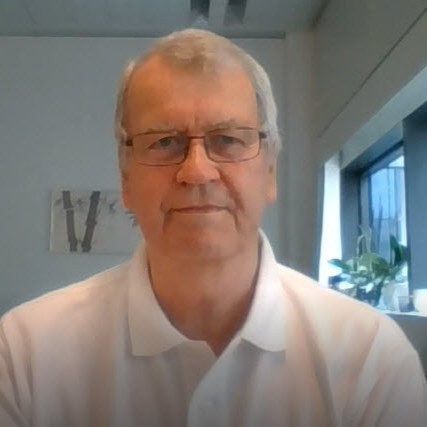 Paul Hobcraft runs
Paul Hobcraft runs 
 Chateau G Pato is a senior futurist at Inteligencia Ltd. She is passionate about content creation and thinks about it as more science than art. Chateau travels the world at the speed of light, over mountains and under oceans. Her favorite numbers are one and zero.
Chateau G Pato is a senior futurist at Inteligencia Ltd. She is passionate about content creation and thinks about it as more science than art. Chateau travels the world at the speed of light, over mountains and under oceans. Her favorite numbers are one and zero. Jesse Nieminen is the Co-founder and Chairman at
Jesse Nieminen is the Co-founder and Chairman at  As an experience architect, Alain helps leaders craft customer, employee and shareholder experiences for profit, reinvention and transformation. He does this through his personal consultancy Alain Thys & Co as well as the transformative venture studio
As an experience architect, Alain helps leaders craft customer, employee and shareholder experiences for profit, reinvention and transformation. He does this through his personal consultancy Alain Thys & Co as well as the transformative venture studio 

